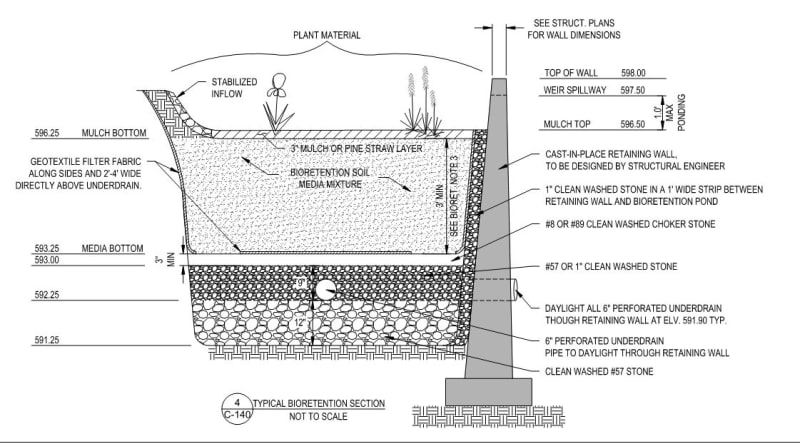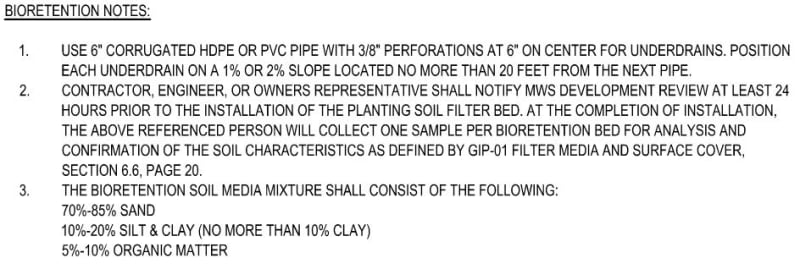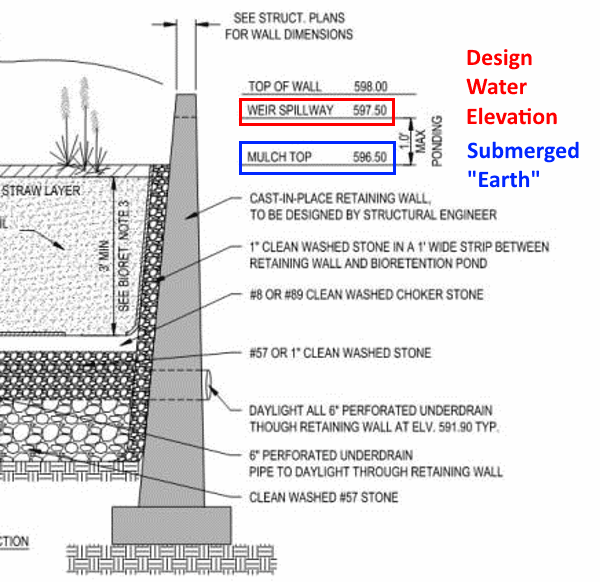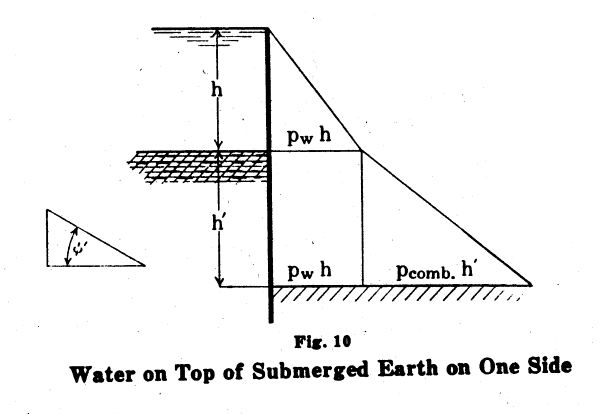Hey everyone,
I have a 12' concrete wall I'm designing around a bio retention area. I'm assuming that there will additional pressure on the wall from the water in the bio-retention media. I'm trying to work a back door calc on this is RetainPro. My thought was to set the water table height to the top of the retention area. The problem is I have no idea what the active EFP for this media would be. I've run the calc using our standard assumed backfill material (110 pcf and 35 psf/ft active) but I'm afraid this will be overly conservative with the added water.
Anybody have an idea what this stuff is made of? Or if assuming hydrostatic pressure behind the wall is even appropriate?
I have a 12' concrete wall I'm designing around a bio retention area. I'm assuming that there will additional pressure on the wall from the water in the bio-retention media. I'm trying to work a back door calc on this is RetainPro. My thought was to set the water table height to the top of the retention area. The problem is I have no idea what the active EFP for this media would be. I've run the calc using our standard assumed backfill material (110 pcf and 35 psf/ft active) but I'm afraid this will be overly conservative with the added water.
Anybody have an idea what this stuff is made of? Or if assuming hydrostatic pressure behind the wall is even appropriate?

![[idea] [idea] [idea]](/data/assets/smilies/idea.gif)




